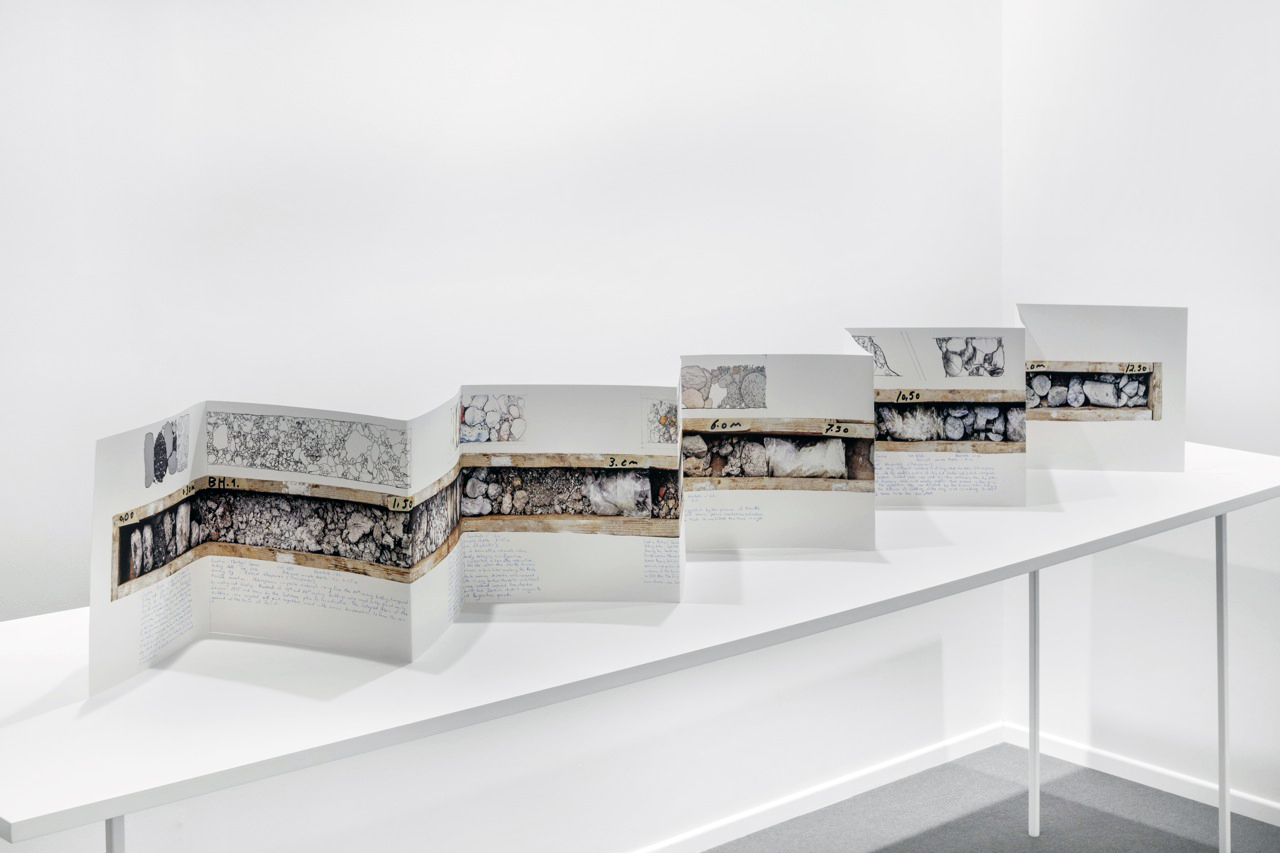Hadjithomas & Khalil Joreige

Joana Hadjithomas & Khalil Joreige
Zig Zag over Time : Martyrs' Square Lot 699 Borehole n 24, 2017
Unconformities project
Edition of 5 ex + 2 AP
Courtesy des artistes & Galerie In Situ - fabienne leclerc, Grand Paris
Zig Zag over time
From the project UNCONFORMITIES
A core is a cylindrical sample extracted from the ground as part of a process of ground analysis carried out before any construction project. A bore is used, with a tube going dozens of meters under the ground to obtain samples of the soil (rock, clay, etc?), cores which are shaped like a long cylinder.
Once they are at ground level, the samples are put in wooden boxes to be studied by engineers and geologists, before being thrown away because their life span is short since the earth disaggregates quickly. . .
We began to photograph the cores a few years ago. Moving from one building site to another, we photographed those boxes which, somehow, made the earth tell its story. Then we did some photo editing based on various photos of different cores found in one place, one piece of land, to reconstitute and gather all the information relating to that site.
We have been always interested in reflecting, through photography, the imprint, the writing of history. Those different underground materials are the result of geological, archeological and also of historic changes.
It is for us a manner to look at the anthropocene era and the way man today is becoming the most powerful geological force.
Therefore, according to the district in which the drilling took place and the core collected, one can reconstruct the history of the city, of the different civilizations which lived in it and of the geological and ecological disasters which occurred.
Those cores represent a moment that soon won?t exit anymore, those stories will soon be erased by the buildings that will be erected there.
We are presenting here 4 cores in 4 different sites in Beirut: Sursock street, Martyr?s square (up), Martyr?s square (down), Sadate street?
Those images are the result of a collaboration between several disciplines (photograph, historians, archeologist, geologist, naturalist?). We asked archeologists and geologists to help us read those samples, to make those images talk and make some technical drawings putting some elements into perspective. Uncomformities ended up to become an installation of photographs, possible narrations and archeological drawings.
Elements and soil from these cores reveal up to 7 different layers of human habitation, as well as the obscured geo-history of a place. A geological sample that traces ecological and planetary perturbations is transformed into an artistic tool through which a new fictional narrative about Beirut emerges.
This creates a narrative of a place through material traces generated from ecological and planetary perturbations, and those left from various ancient civilizations up to contemporary history.
Uncomformities is a geological word, ?a surface between successive strata representing a missing interval in the geologic record of time, produced either by an interruption in deposition or by the erosion of depositionally continuous strata followed by renewed deposition.? An unconformity is a type of discontinuity, a hiatus that tells a lot on the way we represent history as linearity and the way we can study the evolution of the earth and the big changes that we witness.
Today it is considered that archeology and geology cannot be read as successive layers but as actions, things that mix times, civilizations and traces. Ruptures and fragments are constitutives of it as in photography, a hiatus that makes things alive.
Where the Time Capsules sculptures show the cores in a vertical manner, Zig Zag Over Time plays with the notion of representing history in a linear ? and horizontal ? fashion. The notion of the timeline is the structural basis for these works, which combine photography, drawing and text.
Ultimately, however, this notion ? where history is fixed definitively as a series of factual events following each in chronological order ? is subverted. The idea of historical linearity is questioned first and foremost in the idea of the zigzag, defined as ?a line or course having abrupt alternate right and left turns.? This relates to the core displayed in the works, where the course of geological time changes abruptly with the advent of wars, natural disasters and cycles of destruction and reconstruction.
The idea of timeline as a fixed historical document is also subverted by the drawn and textual elements in the Zig Zag. Hadjithomas and Joreige asked people from various disciplines ? natural museum illustrators, prehistorians, and archaeologists ? to draw sections of the cores of their choosing, introducing artistic interpretation into their timeline. In addition, Hadjithomas and Joreige wrote ?possible narratives? for each section of the core, allowing a space for other interpretations ? including the fictional and poetic ? to emerge over time.